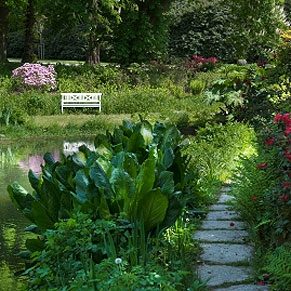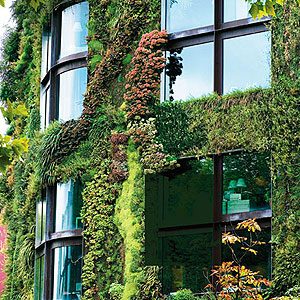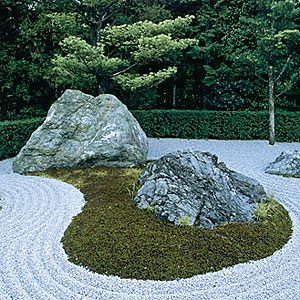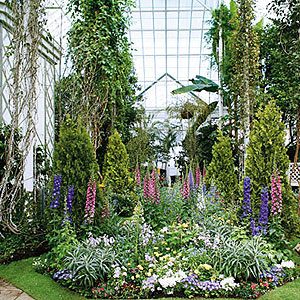
A garden is a friend you can visit anytime.

As Living Art….
It grows straight up a wall, without soil, on a frame of metal and felt. French-born artist botanist Patrick Blanc created a crude version of a vertical garden at age 12. Since then, his hydroponic plant walls have been found on museums, hotels, and office buildings around the world. Why do his botanical artworks have such pull with renowned architects? Blanc, 55, says that plant walls in an urban environment are even more energizing than those in a garden. Here, one of his best-known installations, an outside wall of Paris’s Quai Branly Museum consisting of some 15,000 plants of 150 species from Central Europe, China, Japan, and the United States.

As a Place of Worship …
In this garden outside Taizo-in Zen temple in Kyoto, Japan, raked gravel is used to simulate the waves and currents of seas and rivers. Scholars suggest that the symbolic placement of stones within this dry landscape represents “the entire universe in limited space,” a core concept in Zen philosophy and an ideal environment for achieving a deep meditative state. Created over 400 years ago by Kano Motonobu, a Zen master and painter, the garden hosts 50,000 visitors annually.

As a Classroom …
Noted chef Alice Waters established the Edible Schoolyard in 1994 in Berkeley, California, to teach kids the joy of eating fresh organic food that they’ve grown themselves; her idea has caught on in places like New Orleans and Ann Arbor. More recently, with the School Lunch Initiative Waters has made combating childhood obesity and diabetes her mission, hoping to convince public school principals nationwide to replace microwave lunches and fast food with healthy and enticing meals. “We should teach children to eat for pleasure rather than think of food as simply fuel,” she says. “What could be more alluring than the taste of a fresh, ripe strawberry in summer?”

As a Science Lab …
Are humans and hydrangeas related? Charles Darwin was driven to uncover such mysteries by looking closely at his own backyard in Kent, England. Its masses of primroses, flax, and hollyhocks were stunning, but within this beauty lay the foundations of Darwin’s most famous theories. His experiments in cross-pollination set him on the road to understanding natural selection and evolution, hypotheses developed in his groundbreaking 1859 text, The Origin of Species. The naturalist’s garden was faithfully re-created this spring by the New York Botanical Garden in anticipation of his 200th birthday, in 2009.